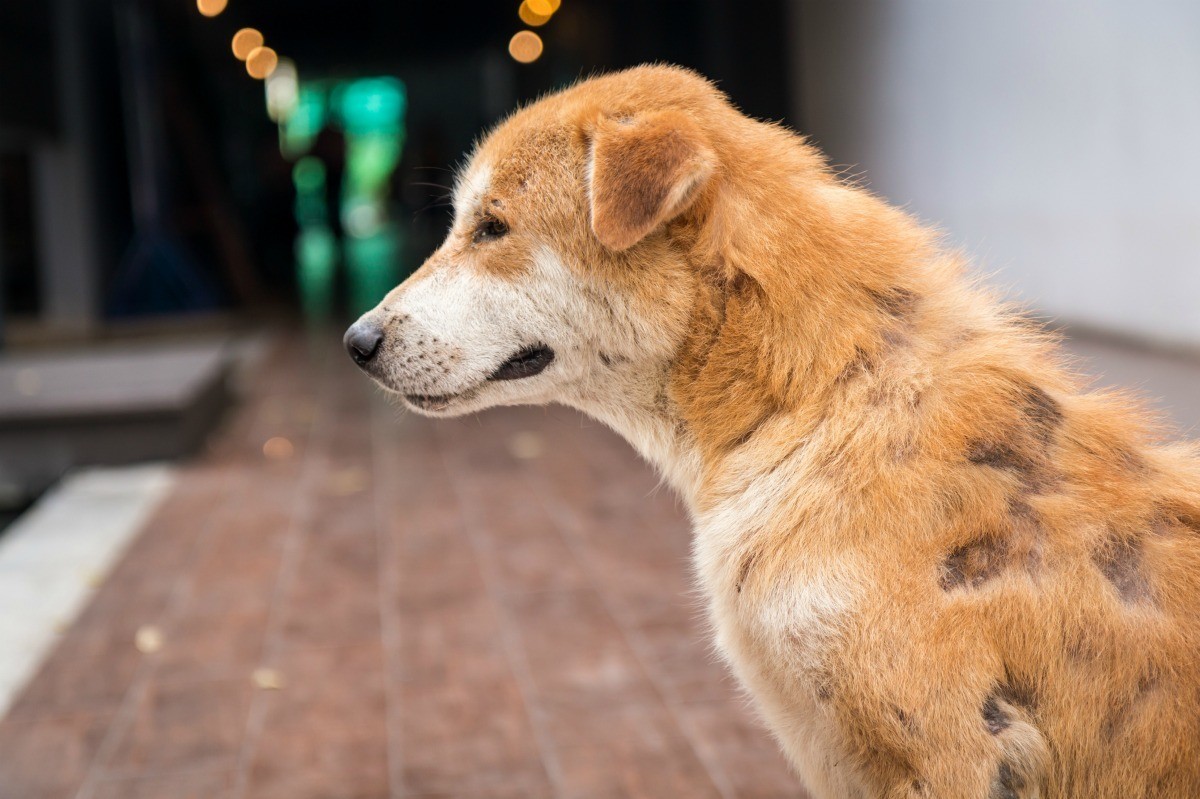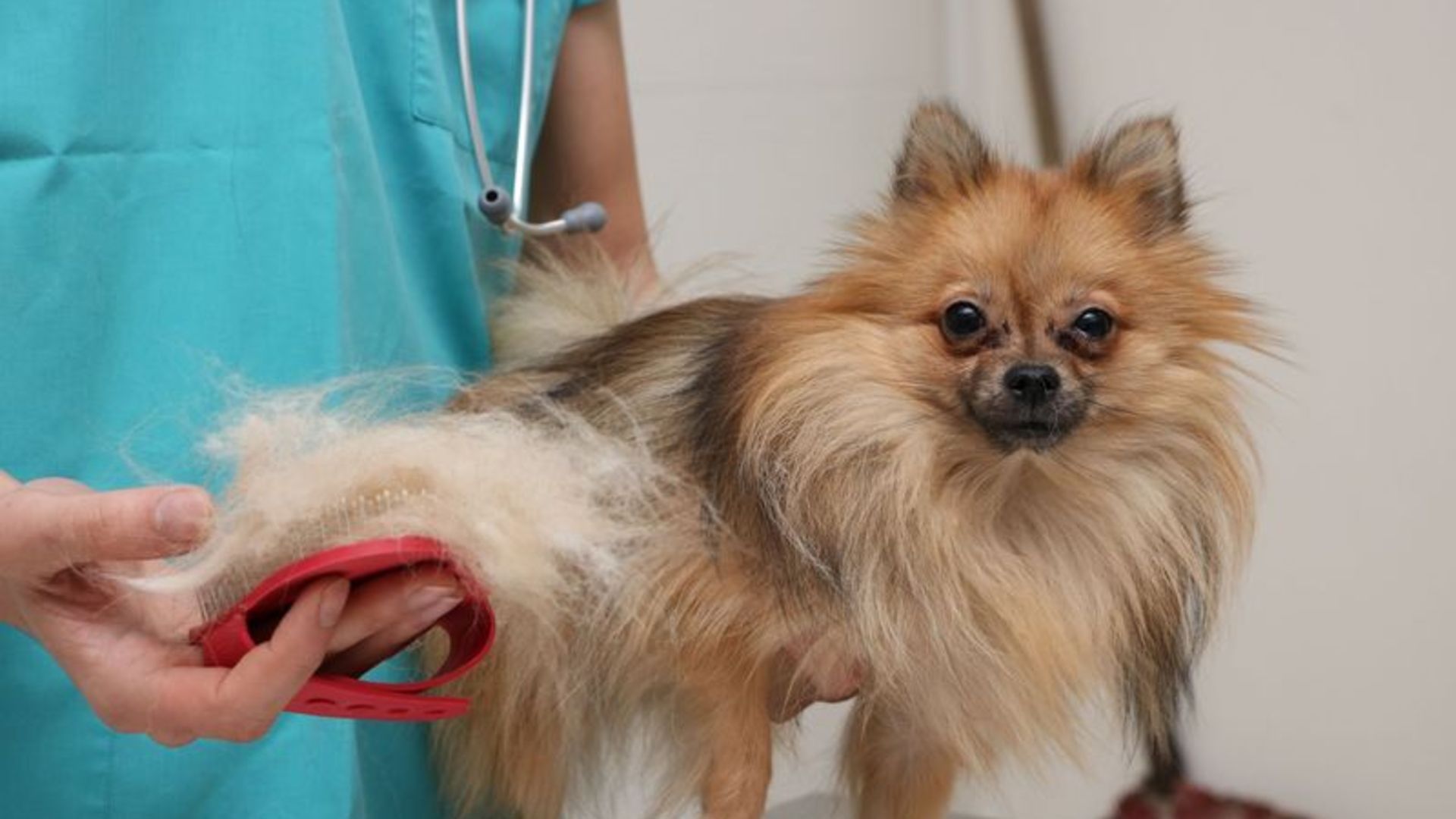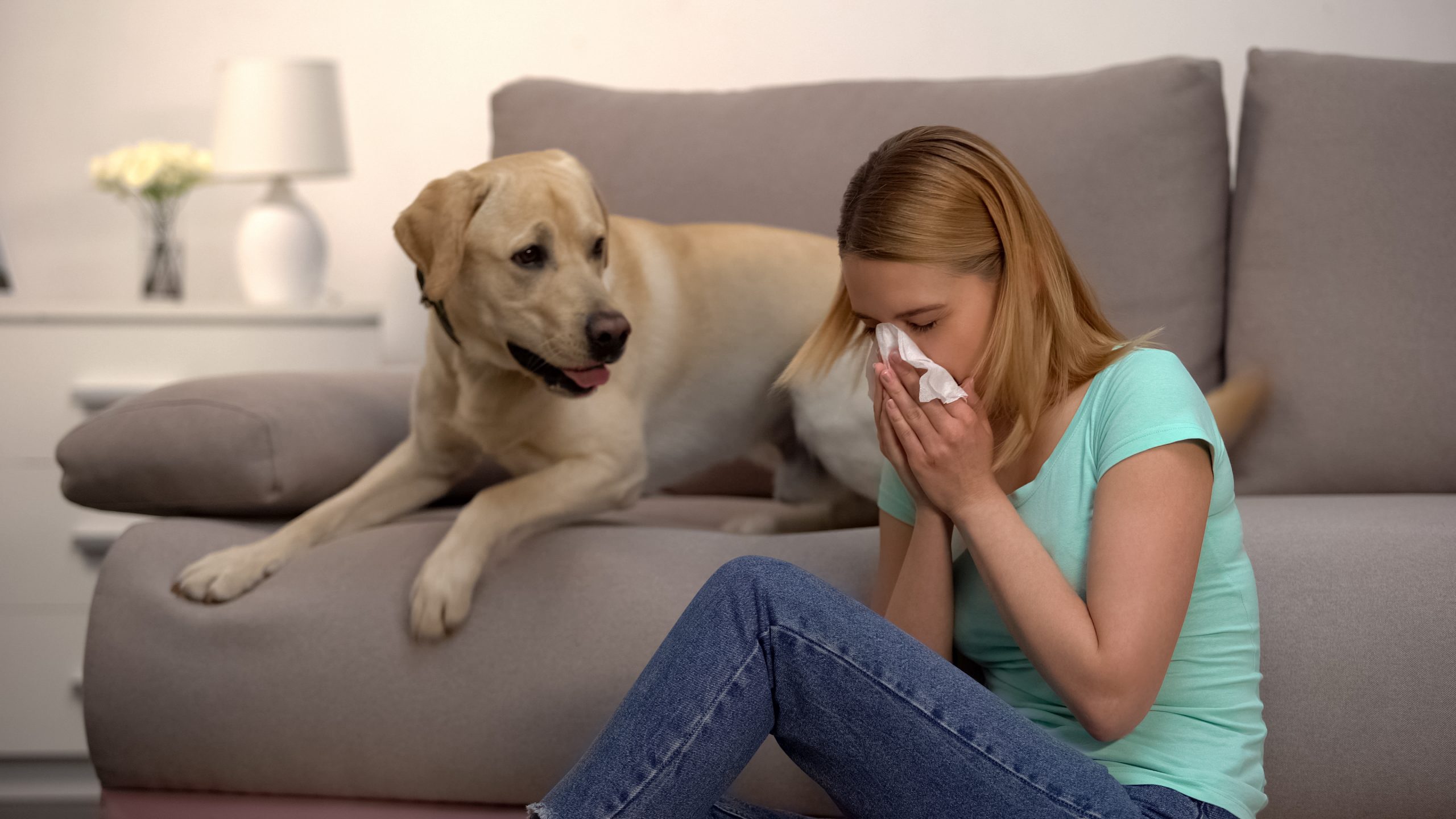
Dog Allergy, Skin Disorders, Home Remedies & Treatment
When your dog is obsessively chewing, scratching, rubbing or licking their skin, you can just imagine how uncomfortable they are. Allergies and skin disorders can make a dog’s life miserable.
Contents
Facts About Dog Allergy And Disorders
Skin disorders in dogs and hair loss in dogs can be caused by many factors. Many itchy dogs have a multitude of problems as the cause which makes it more difficult to diagnose. Any combination of yeast infections, mange, food allergies, fleas, and molds could be responsible. Every cause must be addressed to really tackle the problem. Treating skin conditions takes patience and a period of trial and error. It can take a few tries and different test procedures to isolate the cause (or causes) of a skin condition. If your vet is having trouble diagnosing the problem, you may want to ask for a referral to a veterinary dermatologist.

Fortunately, there are many diagnostic tools available to help your vet get to the root of the problem. Cultures, dog allergy tests, microscopic skin exams, and scrapings can all supply answers to some of the questions about the cause of the itchiness.
Dog Allergy is a life-long, chronic problem. It’s not a curable condition but rather a managed condition.
When you notice skin problems or continued itchiness in your dog, it is best to take them to your vet to discuss possible problems including allergies. Your vet will question you in detail about your dog’s diet, history, and environment. Once your vet has the information, he’ll do a physical exam of the skin, eyes, ears, and hair coat. The exam will also let him assess if there is further skin damage or infection due to the dog’s scratching or chewing. He may be ready to diagnose the problem after his exam or he may want to do further testing.
Poor Coat Quality
A disease of almost any organ or gland can also be the cause of poor hair coat quality on your dog. A healthy coat is a reflection of a healthy dog but a hair loss problem could be a sign of an internal problem. Blood tests should reveal any such problems to your vet.

Here, we’ve compiled the typical reasons why dogs have severe itching and scratching, and why you see hair loss in dogs.
Flea-associated dermatitis:
This is a common problem at one time found mostly in the south, but flea infestation problems have now expanded to other parts of the country. Fleas are difficult to detect so make sure you are aware of the signs of flea problems.
Even the smallest exposure to an allergen can set off a major allergic reaction. In other cases, the bite of a single flea will set off itching of the entire body – but especially the webs between the pet’s toes. The best approach is to apply a preventive topical flea-control medicine such as Advantage Frontline.
Canine Dog Allergy
This is the itching caused by allergies. The dog’s scratching can cause its hair to break off or fall out. For dogs, allergies result in itchy skin. If your veterinarian suspects that your dog is suffering from environmental or airborne allergies, they may perform blood tests or patch tests on the dog’s skin. That way the doctor can identify the problem and prescribe allergy shots. The shots can be administered at home which saves on trips to the vet’s office. This process desensitizes the immune system.

Dog Allergy occurs when the immune system reacts abnormally to what are usually innocuous substances. These include molds, house dust, and house dust mites. Dogs can also be allergic to trees, grasses, and weeds. These are very common allergies for humans also. Some allergies will not be evident except on a seasonal schedule, typically lasting about 3 months. If your dog has seasonal allergies, treatment is only needed during that time frame.
There is no cure for dogs that are allergic to things they breathe. It’s an inherited condition. Normally, you won’t see any signs of allergies until the dog is a year or so old. There are treatments you can try to make your pet more comfortable. They include antihistamines, topical shampoos, anti-inflammatory ointments, and tranquilizers. In the worst of cases, a corticosteroid like prednisone may be prescribed.
Hot Spots (Pyotraumatic Dermatitis):
This skin disorder in dogs typically bothers long-coated thick-haired dogs with rich oily coats. Some of the pure breeds that are prone to hot spots include Golden Retrievers, Cocker Spaniels, Samoyed, Chows, Akitas, and the Pyrenees. Some medical experts believe the nerves in the area are falsely stimulated.

They are a common skin problem seen in the summer months. They typically begin suddenly and advance very quickly.
These hot spots make life miserable for your dog with intense itching along the trunk of the body. Because the pet is constantly itching, the area sometimes becomes inflamed and raw. When the dog licks the are they are just adding more bacteria to the area. The worse the infection becomes, the worse the itch becomes for the animal.
A flea or a tick can set off a hot spot. This happens when a dog is allergic and they scratch so much that they infect their skin and create a hot spot. Skin that is badly inflamed will exude a serous fluid that is the reason the surrounding hair sticks to the wound and traps even more bacteria.
Hot spots may reoccur every 4-8 months or your dog may never show signs again. Hot spots can also attract flies that have the possibility of laying eggs that will hatch maggots and will eat live tissue on the dog.
A trip to the veterinarian is needed!
Usually, the surrounding hair is clipped short and the area scrubbed with a surgical disinfectant. The vet will usually treat hot spots with a topical cortisone agent. Severe cases may require an injection of anti-inflammatory in addition to antibiotics.
Demodectic and Sarcoptic Mange:
Mange is often referred to as canine scabies. It is a skin disease caused by these tiny mites invading the dog’s body. They cause severe itching and, eventually, hair loss.

These mites will multiply very quickly on the surface of the dog. They feed on the dog’s nutrients and cause major medical problems. Some of these mites are so small; they are invisible to the naked eye.
Localized mange occurs on certain parts of the dog’s body. They tend to like the paws, ears, and the face. Generalized mange means that the whole body of the dog is affected.
Sarcoptic mange is the more serious type but it is usually treatable. Ivermectin is the usual treatment for sarcoptic mange. It is usually administered in two doses, two weeks apart. The vet may also recommend medicated baths along with antibiotics to help give the dog some immediate relief and help battle any skin infections.
Cheyletiella is the least serious form of mange you will come across. It usually manifests itself in itching and light dandruff over the dog’s coat. Usually, a medicated shampoo is all that is needed to kill these mites.

Demodectic mange is the third type your dog can acquire and it is the most dangerous of the three. Most dogs have the Demodex mite on their skin, but some dogs develop a sensitivity to it which leads to demodectic mange. It’s mostly found in younger dogs. The first sign will be hair loss around the eyes or face area. If the mange remains localized, it can resolve itself without treatment. If the hair loss remains localized, the mange will often resolve without treatment.
In the generalized form of this problem, the Demodex mites burrow deep into the skin of the dog. The skin will become irritated and itchy. From the constant irritation and itching, secondary skin infection is likely. In this case, prompt veterinary treatment is essential.
Some veterinarians recommend a small, daily Ivermectin dose, along with medicated baths to treat demodectic mange. This works for some dogs, but some have allergic reactions to Ivermectin. The other treatment is a peroxide bath, followed with an Amitraz dip.
Ringworm for Dog Allergy:
Whenever we hear this term, we immediately think real worm but ringworm is actually a fungus. It is often transmitted to dogs via grooming combs and clippers. It will not cause the dog to itch so it’ll be difficult to detect. But you will notice the hair loss in the area due to the ringworm weakening the hair shafts. The areas that this fungus typically attacks I the face, ear, or leg area. It is usually treated with topical ointments.

Stress/Boredom Induced Dermatitis
You tend to see this problem in the breeds that are high strung or dogs that are left on their own a lot. It’s also common for obese, lame, and older animals.
Skin Disorders in Dogs-Hair Loss in Dogs-Eczema-Mange-AllergiesIt is best to find a way to relieve boredom for the dog and find ways to occupy them. Some dogs do better if owners left them outside rather than inside the house. Sometimes, turning on a radio or television for the animal while they’re alone helping. Sometimes drugs are recommended if all else fails.
Other approaches include spraying the area with a safe but bitter-tasting spray. Taping a protective covering over the licked area sometimes works.
Food dog Allergy:
If your dog has a food dog allergy problem, they’ll be itching all over and all of the time. Very much like a dog allergy to an environmental problem.
One way to determine if that is truly the cause is to place them on a hypoallergenic trail diet for sixty to ninety days. This has to be very strict. No additional treats or table scraps. If the problem clears up, you know that it is a food dog allergy. Before you change his diet drastically, it would be advised that you speak to your vet.

Most food allergies in dogs are caused by a source of protein. Most commercial brand dog foods contain horse meat, chicken, or beef, the dog’s diet should be changed to a diet that uses venison, duck, lamb or beans as a protein source.
If the protein doesn’t seem to be the problem, carbohydrates may be the cause of the dog allergy. You would go down the food the dog is currently eating and slowly replace one item at a time.
The good news is any of these special dog allergy food diets are available in commercial form. Don’t think you’ll have to cook a complicated diet for your dog. Most veterinarians carry a line of products that should fit the bill.
If the condition improves, it is likely a food diet. Your dog can be kept on this diet indefinitely. It’s possible the dog will build up a dog allergy to this food after months of eating it, but then a new formula should be tried.
Helping Your Dog Allergy
Treatments directed from your vet may include corticosteroids, antihistamines, topical shampoos or ointments, essential fatty acids, cyclosporine, and antibiotics for secondary infections.

If your dog has allergies to dander, dust, and other common environmental entities, there is even a monthly injection to build up a dog’s resistance. Sounds very similar to what humans receive to combat similar dog allergy problems.
Try giving your dog an oatmeal bath to relieve some of the skin irritation. Run it by your veterinarian before bathing the dog.
